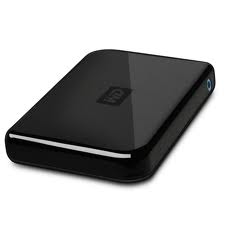External Backup
External hard drives offer a detached storage option for both home and business users. These external drives come in two primary flavors, 2.5” “laptop” drives, and 3.5” standard “desktop” drives. Enclosures are available offering various inputs including Firewire, USB 2.0, USB 3, and eSATA. These drives are relatively inexpensive, easy to setup and highly portable. For this reason, setting up a system backup using portable external drives is very quick and easy to do, particularly in Windows 7.
Setting up backup in Windows 7 is easy, just navigate to the Control Panel > Backup and Restore > Set up Backup.
External Hard Drive Options:
- ioSafe: For a bit more money and a lot more peach of mind the company ioSafe makes VERY VERY rugged external enclosures. Some of these are capable of surviving fire, crushing, submersion, and other hazzards. ioSafe products are for all practical purposes indestructible for consumers. Barring wild events or intentional damage the ioSafe will keep your data safe, and most even come with data recovery insurance should the unthinkable happen.

- Western Digital: Coming in several colors, cheap, lightweight, and variable sizes, the Passport from Western Digital is a good external for basic needs.
- Seagate: From Seagate comes the FreeAgent series which provides all of the same qualities that the Passport line does. Additionally Seagate offers the Black Armor which provides much more security and advanced options for that data you just cannot lose.

Pros
- For the home and small business user, external drives offer a quick, simple, painless and cheap way to backup data on a single machine. These drives can easily be added to any system and are a breeze to setup, with storage capacity of up to 3 TB. Having an external backup will protect you from drive failures, power supply failures and general data corruption.
Cons
- Data security is a picky field, it’s kind of like a paranoid father trying to turn his house into a fortress, new issues are always going to come up. So the real question is, to what degree is both necessary and are you willing to go to protect your data?
- Using (regular) external drives will not protect your data from fire, or theft. External drives are by no means secure (both physically and digitally). This means that someone can easily simply steal your drive, since this drives are built for portability. Additionally, because the drive is connected to the host machine, a virus is very capable to ruining or infecting any backed up data.
The Bottom Line
Using external drives to backup data is an excellent choice for the home user, with one PC or for the small business on a budget. While external drives do not offer a full range of protection, they are significantly cost effective and easy to setup. External drives offer a first line of defense.



What about data carving? There are a few open source tools that are quite powerful when it comes to files that are thought to be corrupt. Most of these corrupt files can be reverse engineered easily and at literally no cost….. Thank you open source. I have recovered thousands of photos for clients using dd and a few open source tools to carve the data off of the drive.
Of course data recovery companies charge an arm and a leg because it can take several hours to days to recover.
I would obtain a fresh hard drive (new or used) and load an OS on it. Once you have a working OS, attached the original hard drive as a slave hard drive and recover your data by pulling the data from the drive. If the data is corrupt, there isn’t much to be done. If the original hard drive is dead (not spinning or has the click of death), there is hard drive recovery companies that you can send your hard drive to and they will recover your data, but ready to pay a pretty hefty price tag though.
So what do you guys recommend someone do if they don’t have an image to restore from? Or lets say their backup image doesn’t actually restore like you would think it should. We all know that malware can play havoc on system images and restore points in Windows. How would you guys recommend an end user recover data?